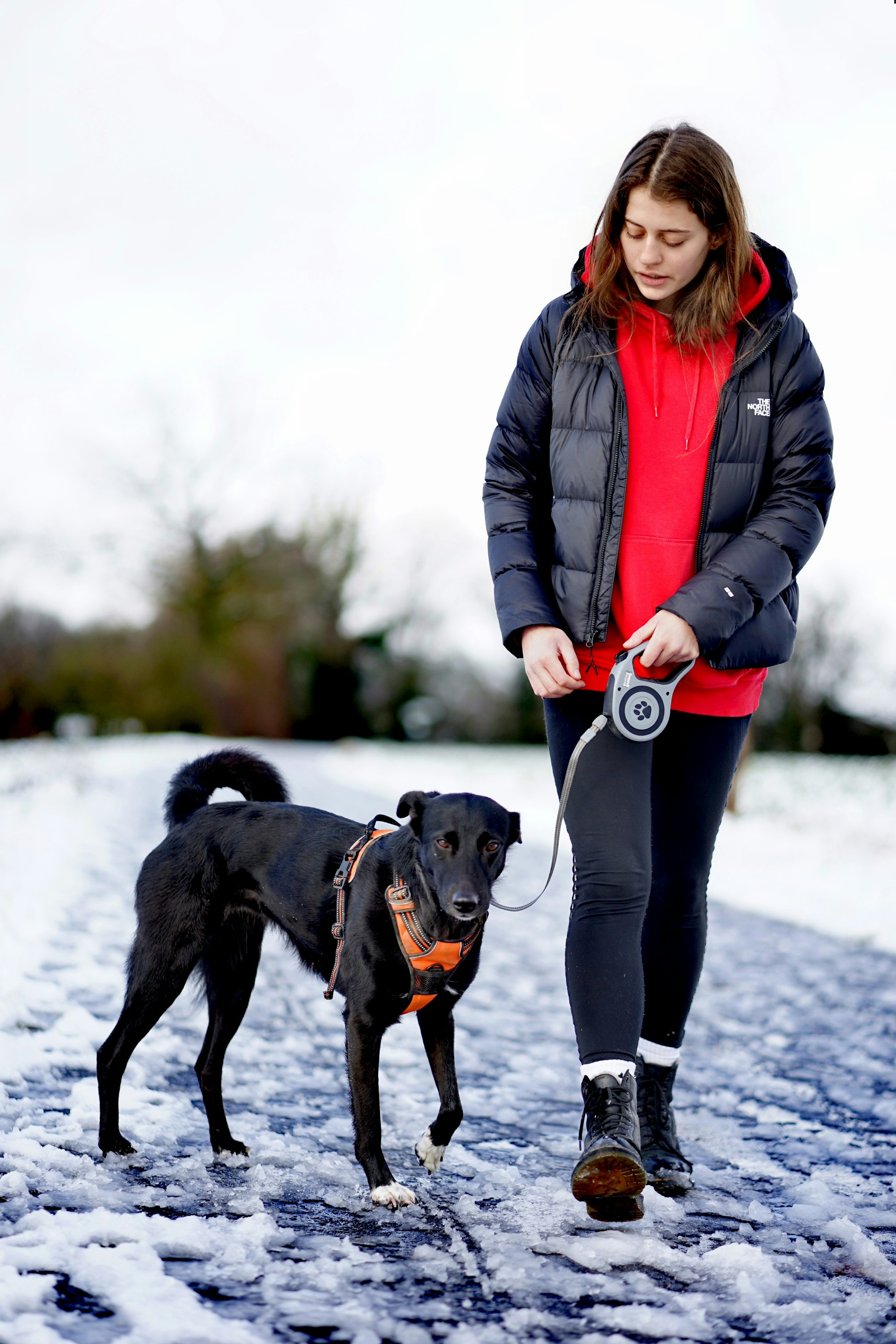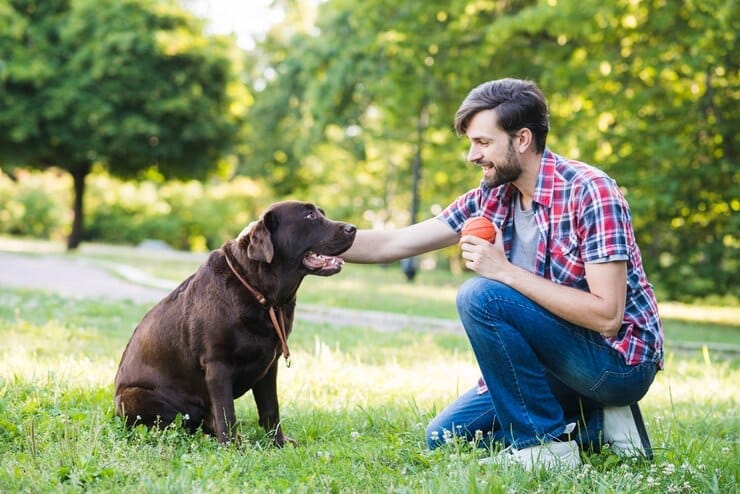Picture this: You’re strolling in the park, the sun is shining, and birds are chirping. Suddenly, you’re caught off-guard, being dragged by your overly-excited Labrador who’s just spotted another dog across the road. Sounds familiar? If so, you're not alone. Many pet owners struggle with leash training, especially for those energetic pullers. But fret not, mastering the walk is indeed possible with the right leash.
Understanding Your Dog's Behavior
Before diving into the list of best leashes, let’s try to understand why some dogs are natural pullers. For some, it could be the sheer excitement of exploring the outside world. For others, it might be an instinctual behavior, like chasing after a squirrel. And sometimes, it's just the breed's nature, such as Huskies, who are historically sled-pulling dogs. The key is understanding that it’s not about dominance but rather their innate behaviors and excitement.
Dog probiotics can help in improving gut health, which can inadvertently affect behavior, but pulling on the leash is more of a training issue. Likewise, melatonin for dogs is great for calming anxiety, but leash-pulling requires a solution that's more hands-on.

Choosing the Right Leash
- No-Pull Leash Solutions: These are designed to distribute pressure evenly across the dog's chest or back, making it harder for them to pull and providing more control for the handler. When your dog tries to pull ahead, the no-pull solution ensures they are gently guided back to your side.
- Double-Handle Dog Leashes: These provide an additional handle near the collar, offering the owner more control when needed. Imagine your dog suddenly darting after spotting a squirrel; with the secondary handle, you can quickly rein them in.
- Shock-Absorbing Dog Leashes: These have built-in springs or bungee mechanisms that absorb some of the force when a dog pulls suddenly. Great for both the dog and the handler, ensuring that neither gets hurt.
- Hands-Free Leashes for Pullers: These are worn around the owner's waist and are best suited for those who like to jog or run with their dogs.
Training: The Crucial Component
Even with the best leash, training is imperative. Begin in a distraction-free environment like your backyard. Every time your dog pulls, stop walking. They'll soon realize that pulling gets them nowhere. Conversely, reward them when they walk nicely beside you. Over time, this positive reinforcement will make them associate the behavior of not pulling with treats or praises.
Now, while you're training them and ensuring they don’t ingest something harmful from the ground, pill pockets for dogs can come in handy. These treats allow you to hide medicine or supplements, making it easier for your furry friend to consume.
Real-Life Testimonies
Sarah, a Golden Retriever owner, said, “My dog used to drag me everywhere! But with a combination of a no-pull leash and consistent training, our walks are now peaceful and enjoyable.”
Tom, an owner of an energetic Beagle, shared, “Switching to a shock-absorbing leash was a game-changer. It gave me more control, and I no longer have to worry about sudden jerks."
Caring for Your Dog Beyond the Leash
Mastering the walk is just one aspect of dog care. Being attentive to other signs is vital. For instance, noticing flea bites on dogs can ensure you address any potential infestation early on. Checking their feet, particularly the dew claws, is also crucial to avoid any injuries or complications. And in the age of advancements, dogs stem cell therapy has emerged as a groundbreaking treatment for various ailments, ensuring our canine companions live longer, healthier lives.
Enhancing the Bond
Walking isn't merely a task to exhaust your dog’s energy or answer their call of nature. It’s a beautiful ritual that strengthens the bond between you and your canine buddy. Mastering the walk not only ensures safety and control but also provides an opportunity to connect and communicate.
Avoiding Common Mistakes
When training, especially for pullers, avoid these common mistakes:
- Inconsistency: If you allow pulling today and punish it tomorrow, your dog will be confused. Stick to your training techniques and be consistent with your expectations.
- Using Force: Yanking or pulling back aggressively can hurt your dog and also instigate more resistance. Always use gentle, consistent correction.
- Skipping Training Sessions: Regular, short training sessions are more effective than infrequent, longer ones. Dedicate time daily, even if it's just a few minutes.
Tools Beyond the Leash
While the right leash plays a significant role, other tools can enhance the walking experience:
- Training Collars: These can help in getting your dog's attention without causing harm or discomfort. It’s crucial to choose the right size and understand its correct usage.
- Treat Pouch: Always have treats on hand to reward good behavior immediately. This reinforces the positive action right away.
- Clicker Training: A clicker can be a powerful tool for marking good behavior. The distinct sound, followed by a treat, can make training more effective.
The Role of Health in Behavior
It's essential to remember that sometimes, erratic or changed behavior could be due to underlying health issues. If you observe sudden changes in your dog's walking or pulling behavior, consult a vet. Ailments, discomfort, or even nutritional deficiencies can influence their actions.
Moreover, dogs, like humans, have emotional and psychological needs. A sudden change in environment, a new member in the family, or even minor changes in routine can affect their behavior. Being sensitive to these changes and adapting your training techniques can make a world of difference.
Beyond the Basics: The Psychological Aspects of the Walk
While we've addressed the physical components of walking, it's worth noting that the walk isn’t just an exercise; it's a dance of emotions, instincts, and mutual respect between you and your dog.

Walking as Therapy
For many, walking their dogs becomes an unintentional therapeutic activity. It's a break from the digital world, a moment to reflect, and an opportunity for mindfulness. When you walk, you aren't just exercising your dog's body, but also their mind. Sniffing around, exploring new terrains, and encountering various stimuli offers mental stimulation that's as vital as physical exertion.
Socializing and Exposure
Walks are often the first time puppies or even shelter-adopted dogs encounter the world beyond their immediate surroundings. It’s their introduction to other animals, various human personalities, noises, vehicles, and so much more. These experiences shape their understanding of the world and influence their behavior.
For instance, a dog that's been exposed to various sounds, sights, and experiences during walks will likely be more adaptable and less anxious in new situations.
Recognizing Signs of Stress
While many dogs love walks, some might find it overwhelming, especially if they're new to it or have had negative experiences. Signs of stress to look out for:
- Lip licking or yawning
- Tucked tail
- Ears pinned back
- Avoiding eye contact or looking away
If you observe these signs consistently, it's essential to evaluate the cause and possibly consult with a dog behaviorist.
Walking as a Leadership Activity
When you walk your dog, especially an energetic puller, it's an opportunity to establish yourself as the leader. This doesn't mean dominating your dog but rather guiding them. A calm, assertive energy can help manage even the most energetic breeds.
The Future of Dog Walking
With advancements in technology and the growing importance of pet care, the future holds exciting prospects. Imagine smart leashes that monitor your dog’s health in real-time or augmented reality tools that make walks more engaging and interactive for your dog.
We've also seen the rise of community dog walking groups. These aren’t just opportunities for dogs to socialize but also for pet owners to connect, share experiences, and provide mutual support.
Introducing the Fi Dog Collar: A Game-Changer for Dog Owners
As we navigate the expansive realm of mastering walks with energetic pullers, the importance of tools that offer a blend of technology, convenience, and safety cannot be understated. The Fi dog collar is one such innovation, marrying smart technology with pet care in an unprecedented way. Let's delve into how the Fi collar aligns with the topics discussed.
Walking as Therapy: Monitoring Health with Fi
While the therapeutic benefits of walking are undeniable, the Fi collar takes it up a notch. It's not just about tracking your dog's location, but also about monitoring their activity levels. With built-in health metrics, it can give insights into how much exercise your dog gets, helping you adjust your walking routines to ensure they’re getting the right amount of physical activity.
Socializing and Exposure: Safety First with Fi
As we expose our dogs to different environments, safety becomes paramount. Whether you’re introducing your pup to a new park or letting them play in an open space, the Fi collar's real-time GPS tracking ensures you always know their whereabouts. Gone are the days of panicking if your dog decides to chase after a squirrel and gets out of sight; with the Fi collar, you can track their location directly from your smartphone.
Recognizing Signs of Stress: Behavior Insights with Fi
Understanding your dog's behavior is crucial. The Fi collar's activity tracking can help you identify patterns in their movement and activity levels. A sudden change in their activity might be an indication of stress or discomfort. For instance, if you notice your dog being unusually inactive during walks, it might be a sign of an underlying issue. This feature empowers you with data to make informed decisions about their well-being.
Walking as a Leadership Activity: Set Boundaries with Fi
Being a leader means ensuring your dog’s safety. The Fi collar allows you to set up geofenced areas, notifying you if your pet steps out of the designated zone. This is especially useful for off-leash training or when visiting new places, ensuring that your dog doesn't wander too far, thereby reinforcing boundaries.

The Future of Dog Walking: Fi Leads the Way
As we envision a future with smart leashes and augmented reality tools, the Fi collar stands as a testament to how technology can revolutionize pet care. The collar's long battery life, durability, and the accompanying app's user-friendly interface make it a favorite among modern dog owners.
Conclusion:
In mastering the art of walking, understanding a dog's behavior, emotions, and needs is pivotal. The walk, a therapeutic bonding ritual, is enhanced by consistent training and the right tools, like the innovative Fi dog collar, which offers safety, health monitoring, and behavioral insights. Recognizing signs of stress, coupled with the use of modern technology, ensures our furry friends' well-being. As we move towards a tech-driven future in pet care, innovations like the Fi collar lead the way, emphasizing that the essence of every walk lies in the shared journey, strengthening the bond between owner and pet.
Frequently Asked Questions (FAQs):
1. What is the best leash for energetic pullers?
There are several top-quality leashes designed for energetic pullers, including no-pull harnesses, head collars, and double-handle leashes. The ideal choice depends on your dog's size, breed, and behavior during walks.
2. How does the Fi dog collar aid in walking energetic dogs?
The Fi dog collar combines smart technology with pet care, allowing owners to track their dog's location in real-time, monitor their activity levels, and even set up geofenced areas to ensure safety during walks.
3. What signs indicate that my dog is stressed during walks?
Common signs of stress in dogs during walks include lip licking, yawning, a tucked tail, ears pinned back, and avoiding eye contact.
4. How can I train my dog not to pull on the leash?
Consistency is key. Utilize training tools like clickers and treat pouches, employ gentle corrections, and reward good behavior. Regular, short training sessions are more effective than infrequent, longer ones.
5. Are there health issues that can cause my dog to pull more on the leash?
Yes, underlying health issues, discomfort, or even nutritional deficiencies can influence a dog's walking behavior. If you notice sudden changes, consult a vet.

